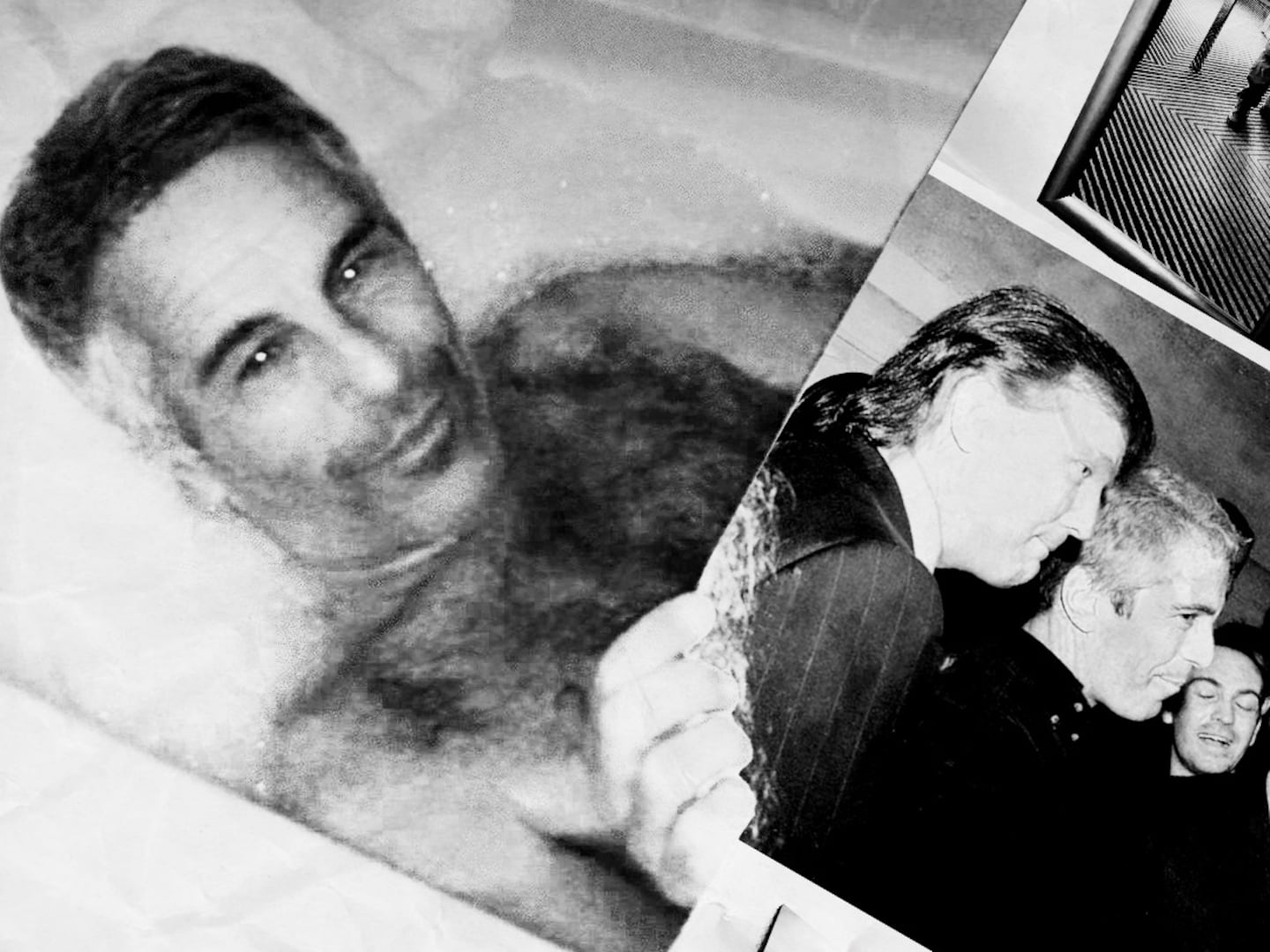In Philadelphia, Dr. Kermit Gosnell stands accused of gruesome crimes. When police raided his abortion clinic in 2010, they said they found the remains of late-term fetuses he’d allegedly delivered before cutting their spinal cords with scissors. Prosecutors called his abortion clinic a “baby charnel house,” and the 2011 grand-jury report is a deeply disturbing account of alleged murder and abuse. His trial started on March 18, but the story recently exploded onto the national stage, thanks in part to a growing chorus of media self-criticism. Here’s The Daily Beast’s guide to the story and the media controversy.

Just how bad was Gosnell’s clinic?
When the FBI raided Gosnell’s clinic in 2010, it was looking for evidence that he was selling prescription drugs, but agents said they found an scene of appalling medical neglect. From the grand-jury report:
“There was blood on the floor. A stench of urine filled the air. A flea-infested cat was wandering through the facility, and there were cat feces on the stairs. Semiconscious women scheduled for abortions were moaning in the waiting room or the recovery room, where they sat on dirty recliners covered with blood-stained blankets.”
Agents said there were aborted fetuses everywhere—in the refrigerator, in cat-food containers, in orange juice cartons—and a jar full of severed feet.
What went on there?
Gosnell is accused of providing late-term abortions by inducing labor and then severing the fetus’ spinal cord with scissors. In some cases, the jury report says, the babies were “viable”—that is, they were breathing and moving. The report describes one such case.
His 17-year-old mother was almost 30 weeks pregnant—seven and a half months—when labor was induced. An employee estimated his birth weight as approaching 6 pounds. He was breathing and moving when Dr. Gosnell severed his spine and put the body in a plastic shoebox for disposal. The doctor joked that this baby was so big he could “walk me to the bus stop.”
In Pennsylvania, abortions are illegal after 24 weeks unless they’re deemed necessary to save the life of the mother. Most doctors don’t perform them after 20 weeks. According to a former employee, Gosnell’s clinic had such a bad reputation by 2009 that it began to cater to women who couldn’t get abortions anywhere else because their pregnancies were too far advanced. Many patients came from out of state, and they were overwhelmingly poor women of color. A former employee testified that white patients were taken to the only clean office and treated by Gosnell himself, while black women were drugged by untrained staff in the lobby. He only took cash, and he charged more for bigger babies and additional anesthetic, according to the report.
Gosnell had untrained staffers, including a 15-year-old high-school sophomore, inject patients with anesthetic hours before he arrived at the clinic, according to testimony in the grand jury report. In 2009, a Bhutanese immigrant named Karnamaya Mongar died of an overdose from Demerol, a sedative rarely used because of its dangers, but which the report says Gosnell preferred because of it was cheap.
Medical equipment was broken and filthy. Former workers testified that Gosnell used unclean specula and reused plastic instruments to remove uteruses. Women were infected with gonorrhea and chlamydia from unsterilized instruments. When staff finally noticed that Mongar had stopped breathing, the report says, no one could resuscitate her because the defibrillator was broken.
Why wasn’t this shut down sooner?
This is partly what the grand jury set out to figure out, and their conclusion is disturbing to say the least. Multiple government agencies, hospitals, and organizations sat on information that should have shut the clinic down years earlier.
The Pennsylvania Department of Health audits hospitals and medical facilities. It approved Gosnell’s clinic in 1979. When it checked back a decade later, the report says it found numerous violations but took Gosnell at his word when he promised to fix them.
Then, in 1993, the department stopped inspecting abortion clinics except when it received complaints about them. The report says they stopped inspecting “for political reasons”:
“The politics in question were not antiabortion, but pro. With the change of administration from Governor Bob Casey to Governor Tom Ridge, officials concluded that inspections would be ‘putting a barrier up to women’ seeking abortions.”
But still, it did get complaints: from several lawyers representing women injured by Gosnell; from a doctor who hand-delivered a complaint alerting the department to the fact that several women referred to Gosnell got the same venereal disease; from the medical examiner of Delaware County informing the department that Gosnell performed an abortion on a 14-year-old girl who was 30 weeks pregnant; and when Mongar, the Bhutanese woman, died.
The Department of State, which licenses individual physicians, also ignored the alarm bells. A decade ago, a former employee reported dangerous conditions at the clinic, but the department let it drop after interviewing Gosnell offsite. Then an insurance company told the department about a 22-year-old woman who died of sepsis after Gosnell perforated her uterus. Again, and several more times, the department ignored complaints.
The report documents this same scenario playing out again and again. Philadelphia health department employees visited the clinic in response to a complaint that fetuses were being stored in paper bags in the employee fridge, noticed numerous violations, documented them, and did nothing. Neighboring hospitals repeatedly received patients injured in flagrantly illegal and unsafe abortions performed at Gosnell’s clinic, documented them, but didn’t report it. The National Abortion Federation evaluator rejected Gosnell’s application, calling his clinic the worst she’s ever inspected, but didn’t notify authorities.
The report concludes:
“Bureaucratic inertia is not exactly news. We understand that. But we think this was something more. We think the reason no one acted is because the women in question were poor and of color, because the victims were infants without identities, and because the subject was the political football of abortion.”
What is he charged with?
In addition to charges involving the sale of prescription painkillers, Gosnell faces seven counts of first-degree murder for the deaths of seven babies, and one third-degree murder for the death of Mongar. If he’s convicted, he faces the death penalty or as much as 100 years in prison.
Eight former Gosnell staffers have pleaded guilty to various charges, including three to third-degree murder. The only former staffer who hasn’t plead guilty is Eileen O’Neil, who allegedly posed as a doctor when she didn’t have a medical license.
Why am I only hearing about this now?
If you’re just hearing about this now, you can thank Kirsten Powers, who wrote an op-ed for USA Today excoriating the media for not giving Gosnell’s trial more coverage
“Let me state the obvious. This should be front-page news. When Rush Limbaugh attacked Sandra Fluke, there was non-stop media hysteria. The venerable NBC Nightly News’ Brian Williams intoned, “A firestorm of outrage from women after a crude tirade from Rush Limbaugh,” as he teased a segment on the brouhaha. Yet, accusations of babies having their heads severed—a major human-rights story if there ever was one— doesn’t make the cut.”
Powers’s piece worked. Over at The Atlantic, Conor Friedersdorf reviewed the case and concluded that everything about it “is insanely newsworthy.” Conservative media have been decrying a “media blackout.”
The Gosnell story wasn’t blacked out. Here’s an NPR story from a year ago, a Slate story, one from Time, CNN, the Associated Press, and The Daily Beast.
There are plenty of possible reasons the story hadn’t made the leap from local to front-page national news until now. First of all, every detail of the story is ghastly. I had to force myself to read the report; I certainly wouldn’t have chosen to read about baby feet found in jars. Compare that to the Sandra Fluke conflagration, or the Susan G. Komen scandal—much easier to devote airtime talking about, because the underlying events aren’t graphically appalling. Pictures of dead fetuses are the stuff of abortion-clinic protest signs for a reason: they make people uncomfortable.
That Gosnell seems like something ripped from one of those signs could also be a reason his story never took off. Slate’s David Weigel acknowledges that journalists tend to be socially liberal and that “horror stories of abortionists are less likely to permeate that bubble than, say, a story about a right-wing pundit attacking an abortionist who then claims to have gotten death threats.”
But another possible reason could be that, as awful as the case is, it’s not clear that there’s anything controversial about it. When Trayvon Martin (to use the standard comparison) went from local to national story, it was partly because there was a debate over stand-your-ground laws and whether his killing constituted murder or self defense. There’s no such dispute here. The question isn’t whether what Gosnell is accused of doing should be illegal: he’s on trial because it clearly is. Gosnell could become a useful pro-life bogeyman, but it’s not clear what policies the antiabortion movement would use his case to push for. That could be why conservative organizations haven’t been giving the Gosnell story top-billing until recently, either.
On the left, abortion-rights activists have reason to be wary of calls for stricter clinic regulation, given the recent string of states effectively regulating clinics out of existence. But activists have also pointed to Gosnell as an example of what would happen if legal clinics are closed and women are forced to go underground, so for them, publicizing it is a wash.
The Gosnell case came up repeatedly when Pennsylvania's General Assembly was debating a law that put stricter requirements on abortion clinics—holding them to the same standard as outpatient surgery centers, which must have wider doors and elevators that can accommodate a stretcher. Critics said the law, supported by Pennsylvania’s pro-life governor, Tom Corbett, did little to increase patient safety and resulted in clinics shutting down because they couldn’t afford to make the upgrades. Now that the law is in effect, there are five fewer clinics in the state, for a total of 17.
The issues raised by the Gosnell trial are important—poverty, racism, enforcement of medical regulations, government accountability, how something like this could go on in plain view for years—but they’re not the issues that generally create partisan outrage or national headlines.






